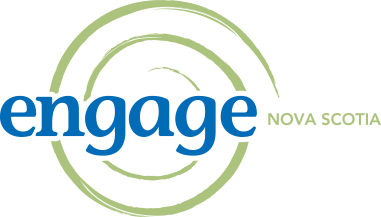
Frequently Asked Questions
Answers to your frequently asked questions about the Quality of Life Survey, results, and analyzing them.
How was the survey administered?
In April 2019, 80 000 randomly selected Nova Scotia households received requests to participate in a 230-question survey. The survey took about 30 minutes to complete. Invitations to fill out the survey with a personalized 5-digit access code was sent to participate through the mail, with a reminder postcard mailed out a few weeks later. People also had the option to call and have a paper copy of the survey mailed to them. Additional targeted outreach was completed to groups that might not otherwise have their voices heard. Once participants completed the survey, they were entered for a chance to win 1 of 25 $400 Sobeys gift cards.
Why couldn’t everyone fill out the survey?
The survey was sent to one in five households in Nova Scotia on a randomized basis to ensure responses came from as thorough of a mix of ages, genders, and locations participating as possible. The survey was designed and distributed in this way to provide an unbiased and deep understanding of what individuals and communities are experiencing across Nova Scotia.
I participated in the survey, will my information be used for another purpose?
Our partner in the creation of this survey, the Canadian Index of Wellbeing, follows strict standards to ensure that information that could identify individuals is kept confidential. Only verified researchers have access to the raw data for purposes aligned with the intent of the Quality of Life Initiative (i.e., improving the quality of life of people living in Nova Scotia). The data collected from the survey responses will be made more broadly available, but not in a way that will enable the identification of any participants.
How much did the survey cost and who funded it?
The budget for the Quality of Life Survey is $542,000. The costs are related to community engagements, printing survey invitations, mailing these invitations to one in five Nova Scotia households, research analysis, and the preparation and production of ten quality of life reports for ten unique regions of the province. This is the most comprehensive project of its type undertaken in Canada.
Engage Nova Scotia receives financial support from a range of partners including the provincial government, municipal governments, as well as private sector and academic partners such as the Nova Scotia Community College who are undertaking related and complementary measurement work associated with the One Nova Scotia goals. You can learn more about who supports Engage Nova Scotia here.
Will the survey be done again?
Yes. The plan is to resurvey Nova Scotia residents in 2025.
What kind of analyses can Engage do?
We can do a range of analyses that produce tables, graphs, and maps to paint a picture of results, disaggregated by topic, area, or demographic, or a combination of all three.
We can also do “null hypothesis testing” and “multilevel modeling.”
If we were to survey today, would the COVID-19 pandemic lead to different results?
Any survey is a snapshot of a person’s responses at the time they are given. There’s no way to know how exactly any experiences or shifts – whether on a global, provincial, local, or personal scale – would lead people to respond differently to the survey questions today.
What we do know, is there is a lot to learn from the results we have that tell us what people were thinking prior to COVID-19 and prior to the other ways a person – and province – have since changed.
Has the data been weighted?
Yes, the data has been weighted to reflect the broader Nova Scotia population. This means that the CIW calculated ‘weights’ to each individual by sex, age, and region which reflects how well we can generalize that person’s information to the rest of Nova Scotia’s information.
What is a Data-Sharing Agreement?
A Data-Sharing Agreement (DSA) is a document that describes expectations for privacy and confidentiality. For example, we expect that you will not share the data with anyone else, and that you will store the data on a password-protected device. In order to have access to the raw data, you must sign our Data-Sharing Agreement.
Are there restrictions on publishing analyses?
No. Before we share datasets or undertake requested analyses, we will ensure that the purpose of further analysis is to advance the quality of life and wellbeing in Nova Scotia. You are welcome to publish the analyses you have undertaken or that you have requested of us and we are happy to support those efforts.
Should we acknowledge Engage and the Canadian Index of Wellbeing when reporting on analysis?
Yes. We ask that you acknowledge the work of the CIW and Engage Nova Scotia, with the following:
This research uses data from the Nova Scotia Quality of Life Survey, which is administered by Engage Nova Scotia in partnership with the Canadian Index of Wellbeing.
Can I use data for commercial purposes?
No, the data is available for those who intend to improve the wellbeing of Nova Scotia residents.
What is a margin of error? And, what is the NS Quality of Life margin of error?
A margin of error describes how close we can reasonably expect a survey result to fall relative to the true population value.
Our overall margin of error with a confidence level of 95% is <1%. This means that with 95% confidence, we can expect information from Nova Scotians who answered every question on the survey to represent how the entire population in the province would respond to the survey, with less than 1% of sampling error.
As one considers and analyzes subsets of the data - by gender, region, age, for example – the margins of error grows in accordance with the number of survey respondents who fit in the subset, relative to what is known about the size of that population overall.
